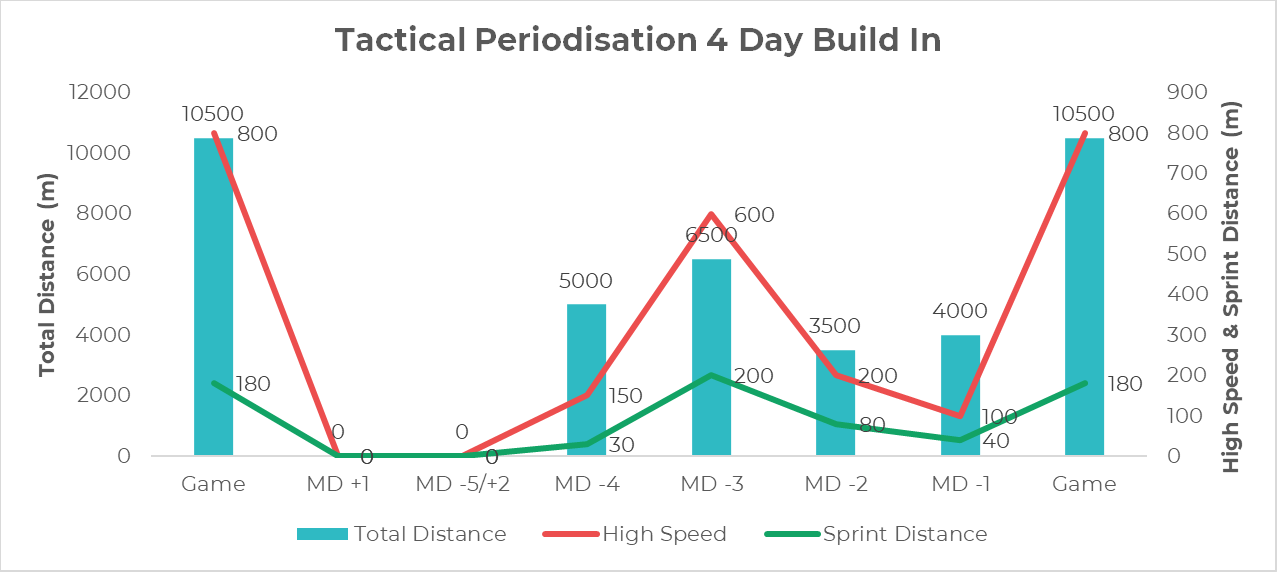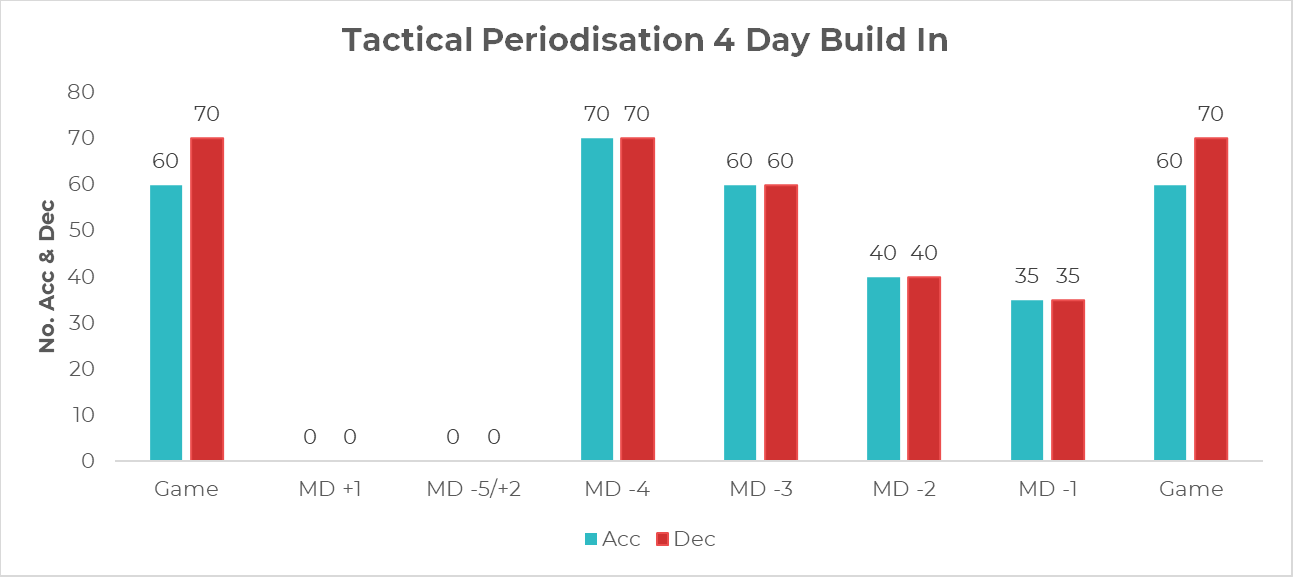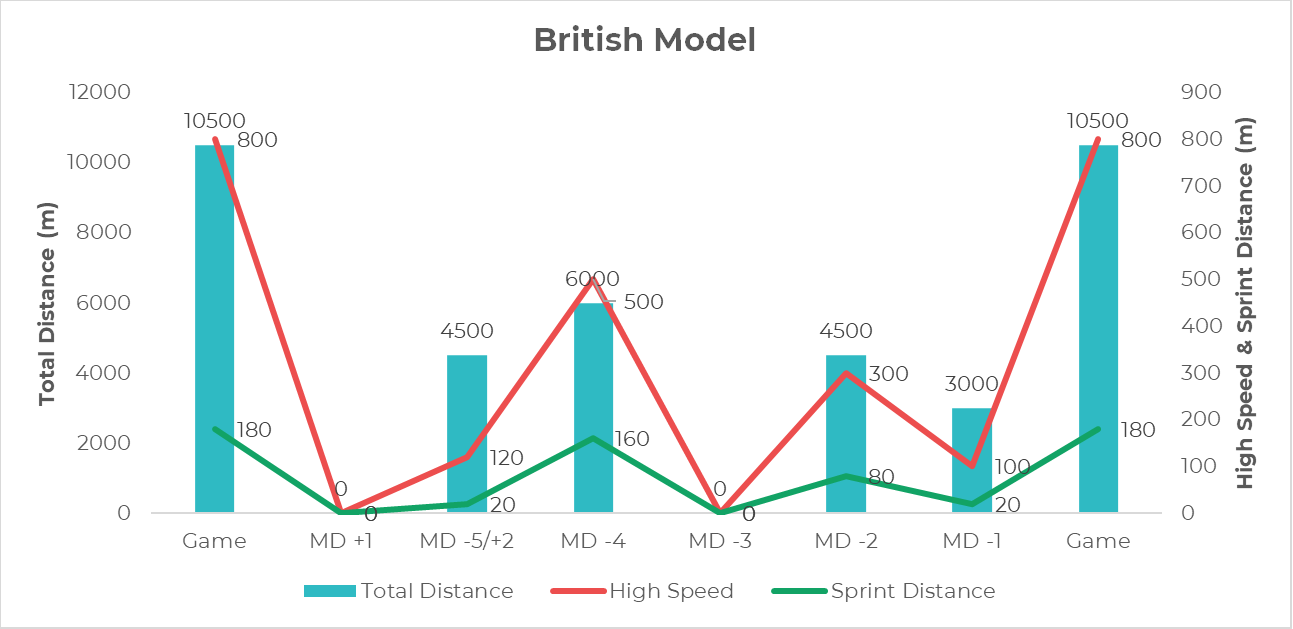
In elite football, where margins between victory and defeat are razor-thin, the careful planning and management of a team’s training schedule is crucial. This is where periodisation comes in—a systematic approach to training that optimizes players' physical and mental performance while reducing the risk of injury.
In this blog, we'll explore what periodisation is, why it's vital in elite football, the methods, and how modern technology like GPS is revolutionizing its application!
What is Periodisation?
Periodisation from a general point of view is the process of dividing the football season into specific phases, each with particular training goals. It can be divided into stages of the season from pre-season, in-season, and off-season, with the chaotic fixture schedule most teams have throughout the season more granular stages involve using cycles, and in particular this is a micro-cycle which is usually a week-long and planned to meet the goals of a microcycle (4-6 weeks).
Teams will plan ahead based on the number of games, the status of their player, and the objectives for that period of time. The idea behind this is to ensure that players are as fresh as possible going into games, providing enough recovery time to ensure performance and reduce injuries.
Different Periodisation Strategies
Various periodisation strategies have been used based on experience and preference of the Head Coaches/Managers, basically, all roads lead to Rome. Some favourite models include:
- Tactical Periodisation – Modern day model by integrating tactical, technical, physical and psychological aspects of the game into every training. Mirror scenarios that your team will face during matches.
- Raymon Verheijens – Football specific conditioning approach focusing on football actions.
- British Model – Looking at one game week where players have two days off a week generally on a Sunday and Wednesday.
Each method has its pros and cons, even when used for a single game week. However, these models must be adjusted for the more common scenario of two games per week.
The Role of GPS Technology
First, it’s essential to understand the fundamental role of technology in modern football training. The introduction of GPS technology has significantly improved periodization. It provides coaches and sports scientists with detailed insights, enabling more precise and effective training plans that help manage player load, prevent injuries, and optimize recovery.
In a one game week no matter their model, most Head Coaches like to have consistent training weeks so by utilising GPS data you can now have averages for each of your specific training days and then use these numbers for your load monitoring. This monitoring can go into three levels of analysis:
- Squad Average
- Positional Averages
- Player Averages
Depending on your level of knowledge and department size will generally determine the level of analysis you can provide and ensure your players maintain freshness going forward.
Tactical Periodisation
This is an example of how a Tactical Periodisation model might be structured for a one-game week (for starting players only), with a four-day build-up to the game. Here's a quick overview of what that might look like:

- MD +1 & +2 – Recovery Days
- MD -4: This is the first session back, focusing on "strength." The aim is to limit high-speed running while incorporating plenty of small-sided games (SSGs) and possession drills, which will include a high volume of accelerations and decelerations.
- MD -3: This day is centered around "endurance" with larger pitch sizes to focus on high-speed running and sprint exposure. Drills like 8v8 or 11v11 are commonly used.
- MD -2: A moderate training day with a "speed" focus, where intensity is prioritized over volume.
- MD -1: A low-intensity session with a "reaction" theme, focusing on final preparations for the game, including set pieces.


Your MD -4 and MD -3 sessions are your heavier workload days.
MD -4 often focuses on accelerations and decelerations, while MD -3 typically emphasizes high-speed running.
Most coaches schedule high-speed work on MD -3 to avoid pushing players too hard immediately after their return, but these sessions can be switched depending on your strategy. The week then tapers off with lighter sessions on MD -2 and MD -1 to ensure players are fresh for the game.
British Model Overview
Another model to look at is the traditional British model, which is less common in modern football but still worth considering.
In a one-game week (Saturday to Saturday), players usually have two days off—Sunday and Wednesday—with four training days in between, balanced with a recovery day on Wednesday.
- MD +1 – Recovery Day (Off)
- MD -5: Seen as a re-introduction session to gradually get the players back upto speed, some teams give the starters from the weekend a part session and the squad players continue. Moderate volumes of accelerations and decelerations while trying to limit sprint exposure.
- MD -4: Higher work load day, utilising the squad training session to emphasise tactical actions such as Team Shape, 11 v 11 and transitions, which in essence will provide a high speed and sprint exposure.
- MD -3 – Recovery Day (Off)
- MD -2: The taper begins, but with 48 hours until the game, tactical work is still a priority.
- MD -1: Preparation for the game, short and sharp to ensure the freshness of your players.


Your MD -4 training session is the high load day, followed by a supposed taper going into the game with your MD -2 and MD -1. However, with the recovery day of MD -3, this puts a big emphasis on planning the sessions on either side, especially MD -2.
After a rest day, players may still need to complete some tactical work, which could result in additional high-speed running and sprinting. This may lead to fatigue going into the weekend game. To manage this, the model offers flexibility, such as limiting starters' training on Monday to reduce volume or increasing the workload on MD -4, knowing there's a recovery day coming.
Conclusion
In elite football, there’s no one-size-fits-all approach to periodization. Each model has its strengths and must be adapted to the team’s specific needs, considering the fixture schedule and player conditions. Whether you’re using Tactical Periodisation, Verheijen’s model, or the British model, the ultimate goal remains the same: to help the head coach maximize performance while minimizing injury risks.
Whatever level of analysis you can provide, if you have GPS data, make sure it’s fully utilized. It can make a significant impact by enabling your head coach to train players effectively, without the fear of overtraining or physical limitations.
If you’re looking to fine-tune your team’s training strategies or want to explore how GPS data can revolutionize your approach, we're here to help.
Schedule a free consultation with our experts and discover how you can maximize your team's potential while minimizing injury risks.
We're excited to support you on your journey to success!
.png)

.png)